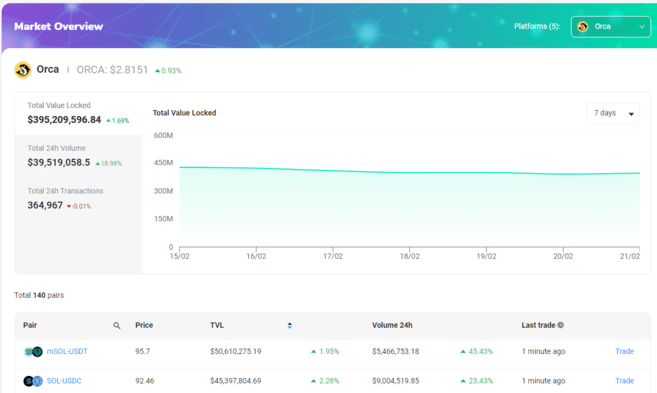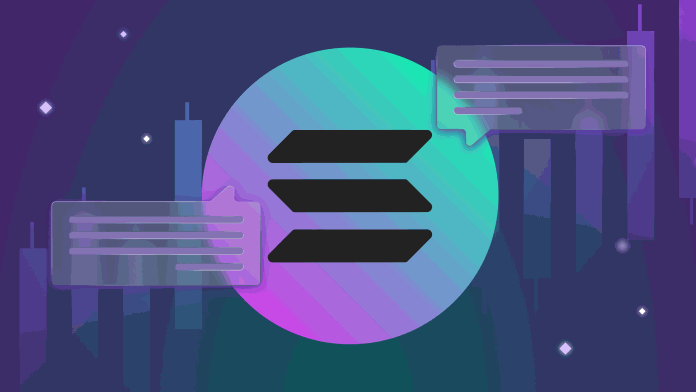
In the world of blockchain technology, transparency and accessibility are paramount. One way to achieve these goals is through the use of blockchain explorers. These tools allow users to explore and analyze the contents of a blockchain, providing them with valuable insights and data. Solscan is a blockchain explorer that has gained significant popularity in the Solana ecosystem. In this comprehensive guide, we will delve into the features, functionalities, and benefits of Solscan as a powerful tool for navigating and understanding the Solana blockchain.
What is Solscan?
Solscan is a robust blockchain explorer designed specifically for the Solana network. It provides users with a user-friendly interface to explore and interact with various aspects of the Solana blockchain, such as blocks, transactions, accounts, contracts, and more. With its intuitive design and comprehensive set of features, it has become an essential tool for developers, enthusiasts, and investors alike.
Understanding the Solana Blockchain
Before diving into the features of Solscan, it’s important to have a basic understanding of the underlying technology it navigates – the Solana blockchain.
– Consensus Mechanism:
Solana employs a unique consensus mechanism, Proof of History (PoH). This mechanism creates a verifiable record of time between events on the blockchain, enabling fast confirmation times without compromising security or decentralization.
– High Throughput:
One of Solana’s key strengths is its ability to handle high transaction volumes. It can achieve remarkable scalability while maintaining low fees by utilizing parallel processing across multiple nodes in their network architecture called Tower BFT (Byzantine Fault Tolerance).
– Low Latency:
The combination of PoH and Tower BFT allows for extremely low block confirmation times on the order of milliseconds. This makes Solana highly suitable for high-frequency trading, decentralized applications (dApps), and other use cases where speed is crucial.
Why should I use SolScan?
Using a blockchain explorer is essential for anyone transacting with a network. If you aren’t sure where your staked funds have gone, or perhaps a transaction is still pending, you can use SolScan to find out what’s happened. All information on SolScan comes directly from the Solana blockchain, so you can be sure it’s accurate. Using SolScan or any blockchain explorer will help you understand the mechanics of DApps you interact with and the transactions you make.
SolScan uses the same format as EtherScan, making it easier to understand. Many users prefer its layout to Solana’s official explorer. It’s all free to use and contains several useful tools, lists, and analytical graphs. The explorer also contains a set of public APIs that can leverage real-time data from SolScan into custom, third-party applications and tools.
How to look up transactions and addresses on SolScan?
One of SolScan’s most-used features is the search function for transactions and addresses. With the correct hash, you can quickly access a large amount of information. This includes transaction fees, confirmations, timestamps, addresses involved, and more.
Transactions
1. Every Solana transaction is recorded on the Solana mainnet with a signature. This is a long string of numbers and letters that looks like this:
5JLcGJQfZjEEuh1bSDqyw2iEfLuFRoYRJY1paoSwrZC8c8zZFW3VqvxsJgjW3bsUjTrpEUDEtvs83PxsuR6hUWqz
2. Copy and paste the signature into SolScan’s search bar and hit enter.

3. You’ll now see all available information about the transaction you searched. This is divided into three categories: [Overview], [SOL Balance Change], and [Token Balance Change].

4. The [Overview] category will have most of the details you need. Let’s go through the list:
| Signature | The alphanumeric hash identifies the previous block. |
| Block | The block number your transaction was processed in. These numbers are sequential and indicate your transaction’s placement within the blockchain’s history. |
| Timestamp | The timestamp associated with the block in which your transaction was processed. |
| Result | The transaction’s confirmation status. |
| Signer | The wallet address that initiated the transaction. |
| Fee | The fee paid for the transaction. |
| Main Actions | An overview of the activities associated with the transaction. |
| Previous Block Hash | The alphanumeric hash to identify the previous block. |
| Instruction Details | A detailed log of the transaction’s actions. |
| Program Log | A detailed log of the instructions/actions results. |
5. For further information, the [SOL Balance Change] and [Token Balance Change] tabs provide data on the transaction’s token balance changes for all parties involved.
Addresses
A similar method can be used to learn more about an individual address. You can then check a detailed history of the address’s activities. This can give you an overview of a particular wallet’s transactions and smart contract interactions.
1. Find the Solana address you want to look at. It’s shorter than a signature and looks something like this:
138KHwTqKNWGLoo8fK5i8UxYtwoC5tC8o7M9rY1CDEjT
2. Copy and paste the address into SolScan’s search bar and hit Enter.

3. You’ll now see all available information about the account you searched for. The [Overview] section shows current account balances, while the bottom tabs deal mainly with transaction history.

How to find tokens on SolScan?
Tokens are easily verifiable on SolScan, and you can fully display their details. You need to:
1. Copy and paste the token address into SolScan’s search bar and hit enter. In this example, we’ve used a wrapped version of Bitcoin (BTC), but you can also use a wrapped version of Ethereum (ETH) or any other SPL token in the Solana network.
The token address looks like this:
9n4nbM75f5Ui33ZbPYXn59EwSgE8CGsHtAeTH5YFeJ9E
2. If you entered the address correctly, you will see the following information.

Tokens
| Fully Diluted Market Cap | This is the max total supply multiplied by the token’s current price. It’s called diluted because it also includes locked tokens. |
| Max Total Supply | The total number of tokens that will ever exist for a particular cryptocurrency, whether previously mined or issued in the future. |
| Holders | The number of addresses holding the token. |
| Social Channels | Links to the token’s official social media channels. |
| Token name | The name and ticker of the token in the format: [token name (TICKER)]. |
| Token address | The account (usually multi-signature) that has the authority to validate transactions within the network. |
| Owner Program | A class type and unique ID indicating the specific owner program responsible for reading and writing data to the blockchain. |
| Authority | Descriptive tags are used to indicate the nature of the token. It can be used to find similarly categorized tokens. |
| Decimals | How divisible a single token is (the number of decimals allowed). |
| Tags | Descriptive tags used to indicate the nature of the token. It can be used to find similarly categorized tokens. |
| Transactions | A complete and sequentially ordered list of all token transactions. |
| Holders | A full list of all accounts holding the token ordered by total quantity held and percentage share. |
| Analysis | Graphs on token distribution and holders. |
| Markets | A list of all known markets and pairs supporting the token. |
How do I find Solana’s active accounts?
1. You can find out the number of active accounts and other key blockchain metrics by clicking [Analytics].

2. The SolScan analytics page has a wide range of information about network nodes, transactions per second (TPS), new tokens, new NFTs, and more. Under the [Accounts] header, you can find the number of daily active wallets.

3. Note that you can select different periods at the top right corner.

How to access DeFi dashboards on SolScan
1. Some of the largest DEXs in the Solana ecosystem have dashboards built into the Solana block explorer. You can find them quickly under the [Defi] tab.

2. Let’s take a look at Orca. This dashboard shows basic information on Total Value Locked (TVL), volume, and active trading pairs available in their liquidity pools.

How to access the NFT dashboard on SolScan
1. SolScan makes seeing new NFTs, trades, and collections easy with the NFT dashboard. You can find the section in the website header.

2. The NFT dashboard will let you search through any NFT available on Solana. The [Collections] tab will give you a list of NFT projects based on volume. The [Trades] tab will show the most recent sales, while the [New NFTs] will list the most recent mints.

Conclusion
Solscan is an indispensable tool for anyone exploring, analyzing, or interacting with the Solana blockchain. Its intuitive user interface, comprehensive features, and frequent updates make it a go-to choice for developers, investors, researchers, and enthusiasts alike. By leveraging Solscan’s capabilities, you can unlock valuable insights into blocks, transactions, accounts, tokens, and validators—and gain a deeper understanding of one of the most promising blockchain networks in existence today.


